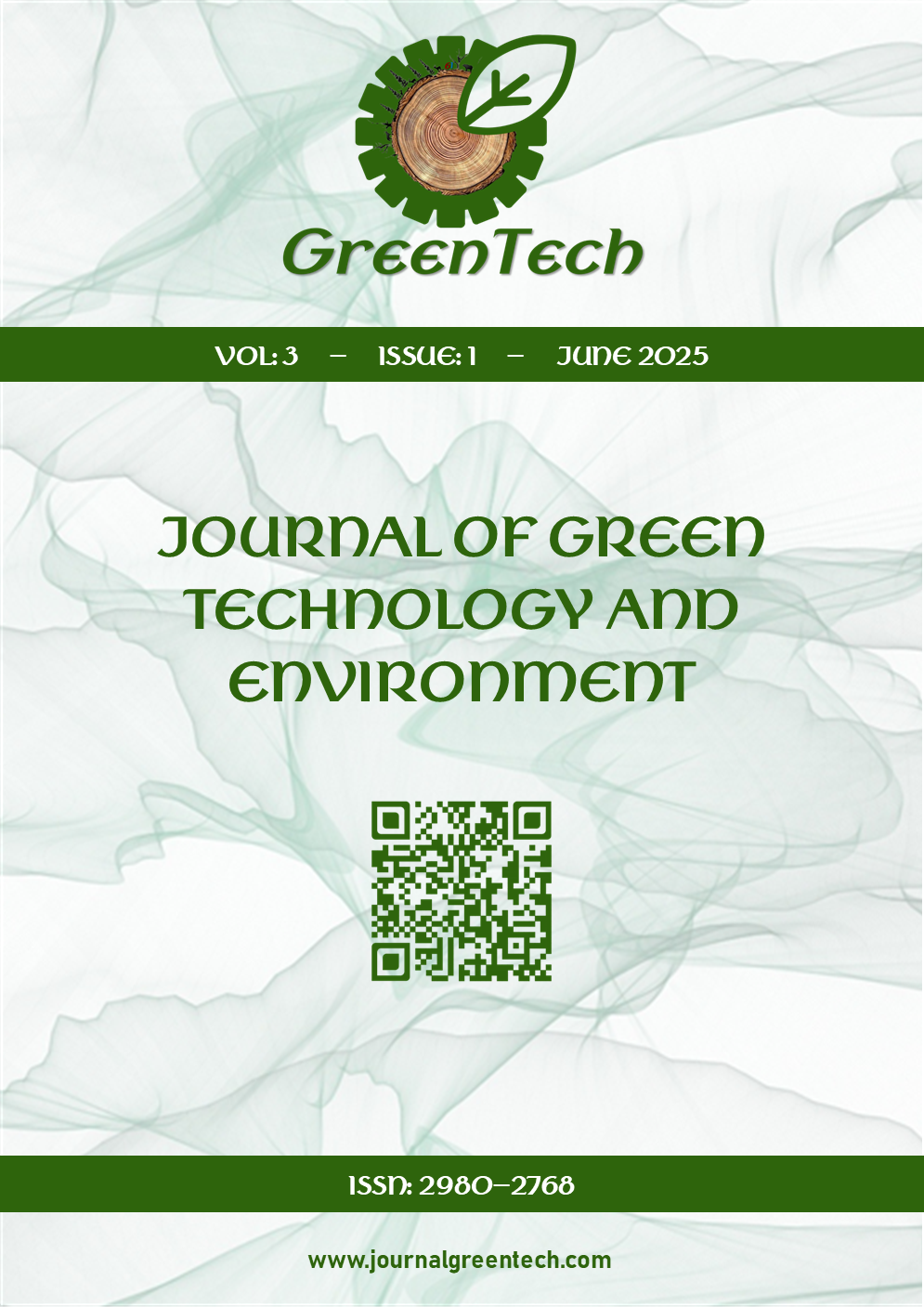Air Pollution Estimation and Trends in Mainz 2017-2022: A Case Study
DOI:
https://doi.org/10.5281/zenodo.15441950Keywords:
PM2.5, air pollution, satellite data, ground sensors, MainzAbstract
Air pollution is a pressing global environmental challenge, with PM2.5 (particulate matter with a diameter of less than 2.5 micrometers) being recognized as one of the most hazardous pollutants to human health. Prolonged exposure to PM2.5 has been linked to respiratory diseases, cardiovascular conditions, and premature mortality. It has been shown that 99% of the world population is exposed daily to pollutant concentrations exceeding the World Health Organization’s recommended safe levels. This study compares PM2.5 levels measured by satellite data from the Atmospheric Composition Analysis Group at Washington University in St. Louis with ground-based measurements from the Sensor Community initiative using SDS011 sensors deployed in Mainz, Germany. In addition, we investigated whether Mainz has achieved a positive trend in reducing PM2.5 concentrations and assessed how well the city complies with WHO standards. Our results indicate that: (a) satellite measurements consistently record higher PM2.5 values than ground-based sensors, (b) Mainz has experienced a decreasing trend in PM2.5 levels in recent years, although some of this reduction may be attributed to pandemic-related lockdowns, and (c) pollution levels in Mainz remain significantly above WHO guideline limits.
References
Aas, W., Fagerli, H., Alastuey, A., Cavalli, F., Degorska, A., Feigenspan, S., Brenna, H., Gliß, J., Heinesen, D., Christoph Hueglin, Adéla Holubová, Jean-Luc Jaffrezo, Mortier, A., Marijana Murovec, Jean-Philippe Putaud, Rüdige, J., Simpson, D., Solberg, S., Tsyro, S. and Kjetil Tørseth (2024). Trends in Air Pollution in Europe, 2000–2019. Aerosol and Air Quality Research, 24, pp.230237–230237. doi:https://doi.org/10.4209/aaqr.230237.
Anzola, J., Pascual, J., Tarazona, G., & González Crespo, R. (2018). A clustering WSN routing protocol based on k-d tree algorithm. Sensors (Basel, Switzerland), 18(9), 2899. https://doi.org/10.3390/s18092899.
Bentley, J. L. (1975). Multidimensional binary search trees used for associative searching. Communications of the ACM, 18(9), 509–517. https://doi.org/10.1145/361002.361007.
Brook, R. D., Rajagopalan, S., Pope, C. A., Brook, J. R., Bhatnagar, A., Diez-Roux, A. V., Holguin, F., Hong, Y., Luepker, R. V., Mittle-man, M. A., Peters, A., Siscovick, D., Smith, S. C., Whitsel, L., & Kaufman, J. D. (2010). Particulate matter air pollution and car-diovascular disease: An update to the scientific statement from the American Heart Association. Circulation, 121(21), 2331–2378. https://doi.org/10.1161/CIR.0b013e3181dbece1.
Hahad, O., Lelieveld, J., Al-Kindi, S., Schmitt, V. H., Hobohm, L., Keller, K., Röösli, M., Kuntic, M., & Daiber, A. (2024). Burden of disease in Germany attributed to ambient particulate matter pollution. Herz. https://doi.org/10.1007/s00059-024-05269-8.
Handschuh, J., Erbertseder, T., & Baier, F. (2023). Systematic evaluation of four satellite AOD datasets for estimating PM2.5 using a random forest approach. Remote Sensing, 15(8), 2064. https://doi.org/10.3390/rs15082064.
Hsu, N. C., Tsay, S. C., King, M. D., Herman, J. R., Holben, B. N., Eck, T. F., Smirnov, A., Chatenet, B., & Procureur, J. (2019). Enhan-cing satellite-derived PM2.5 estimations. Remote Sensing of Environment, 227, 312–324. https://doi.org/10.1016/j.rse.2019.04.019.
Krittanawong, C., Qadeer, Y. K., Hayes, R. B., Wang, Z., Thurston, G. D., Virani, S. S., & Lavie, C. J. (2023). PM2.5 and cardiovascular diseases: State-of-the-art review. International Journal of Cardiology. Cardiovascular Risk and Prevention, 19, 200217. https://doi.org/10.1016/j.ijcrp.2023.200217.
Microcontrollers Lab. (2024). Nova PM SDS011 Dust Sensor – Pinout, Working & Interfacing. Retrieved from https://microcontrollerslab.com/nova-pm-sds011-dust-sensor-pinout-working-interfacing-datasheet/
Mushtaq, Z., Shah, A., & Younis, M. S. (2024). Satellite or ground-based measurements for air pollutants. Environmental Monitoring and Assessment, 196(4). https://doi.org/10.1007/s10661-024-12462-z.
Rheinland-Pfalz State Environmental Agency. (2023). PM2.5 Pollution Trends in Mainz. Retrieved from https://www.lfu.rlp.de.
Shen, S., Li, C., van Donkelaar, A., Jacobs, N., Wang, C., & Martin, R. V. (2024). Enhancing global estimation of fine particulate mat-ter concentrations by including geophysical a priori information in deep learning. ACS ES&T Air, 1(5), 332–345. https://doi.org/10.1021/acsestair.3c00054.
Sensor Community. (2024). Sensor.community | Build your own sensor and join the worldwide civic tech network. Retrieved from https://sensor.community.
Thermo Fisher Scientific Inc. (2018). Model 5030i SHARP instruction manual. Retrieved from https://assets.thermofisher.com/TFS-Assets/CAD/manuals/epm-model-5030i-sharp-manual-en.pdf.
Washington University in St. Louis (WUSTL). (2022). Atmospheric Composition Analysis Group. Retrieved from https://sites.wustl.edu/acag.
World Health Organization. (2021). Air quality guidelines. Retrieved from https://www.who.int/publications/i/item/9789240034228.
Wang, Y., Li, L., Chen, X., Liu, Y., & Zhang, Q. (2020). A hybrid model for improving PM2.5 concentration estimation. Atmospheric Environment, 223, 117290. https://doi.org/10.1016/j.atmosenv.2020.117290.
Xue, T., Zheng, Y., Geng, G., & He, K. (2019). Evaluation of PM2.5 concentrations derived from satellite-based aerosol optical depth over China. Environmental Research, 173, 476–486. https://doi.org/10.1016/j.envres.2019.03.06.
Downloads
Published
How to Cite
Issue
Section
License
Copyright (c) 2025 Journal of Green Technology and Environment

This work is licensed under a Creative Commons Attribution 4.0 International License.







